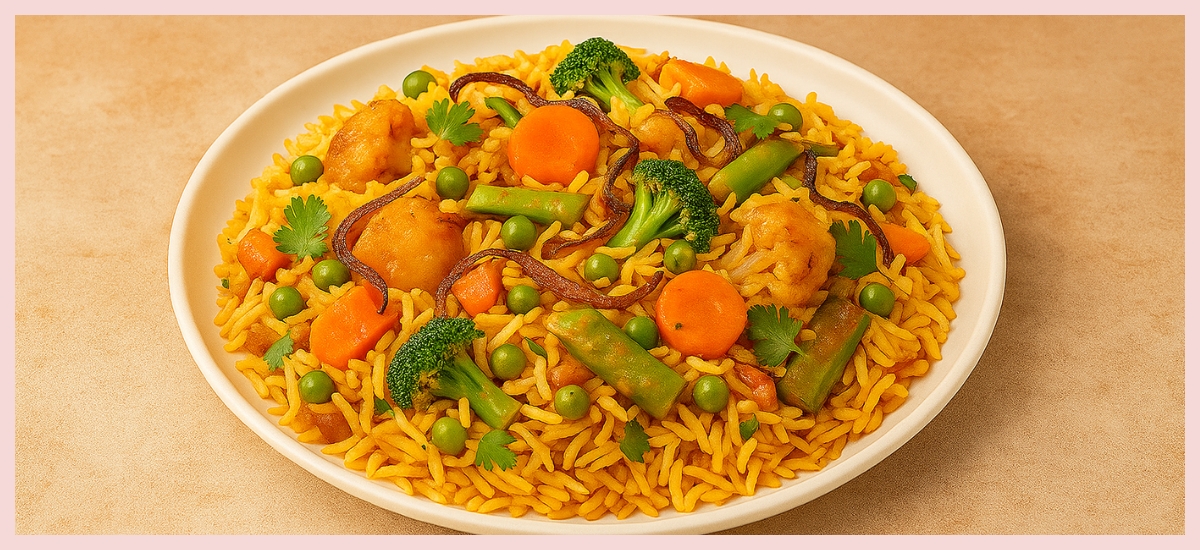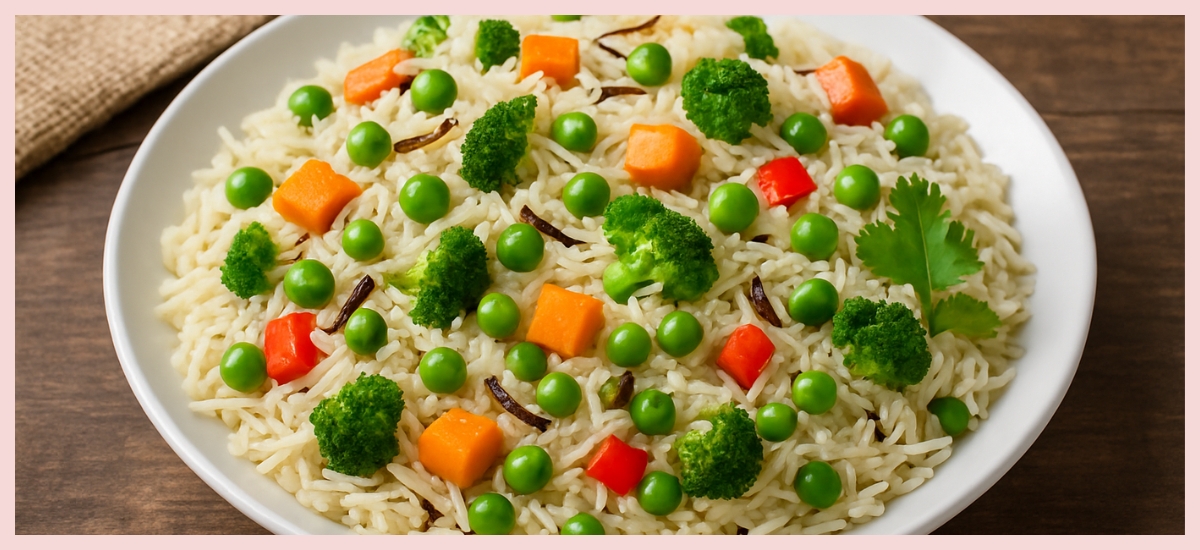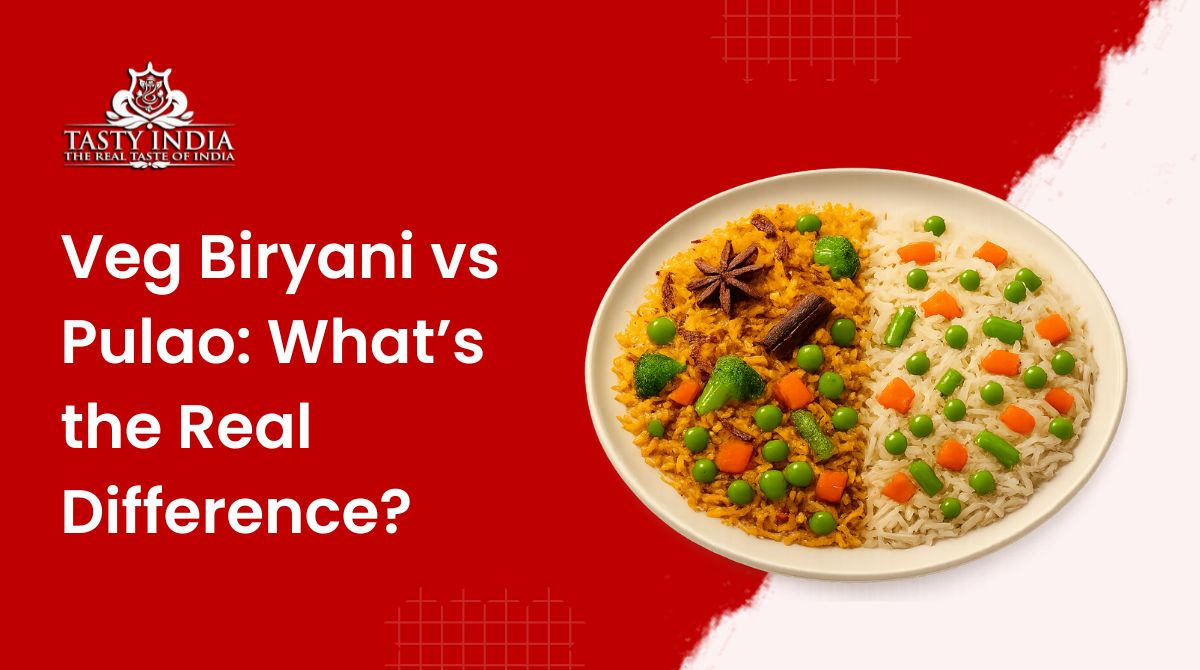In the world of Indian cuisine, few dishes spark as much debate as veg biryani and pulao. While both are rice-based delicacies packed with vegetables and spices, they are far from being the same. At first glance, it may seem like the only difference is in the name, but a closer look reveals striking contrasts in preparation, flavor, and tradition. So what truly separates veg biryani from pulao? Let us explore the history, ingredients, cooking techniques, and cultural importance of these two iconic dishes.

Understanding Veg Biryani

Veg biryani is a dish that holds a royal place in Indian culinary heritage. Traditionally associated with Mughal kitchens, biryani is an elaborate preparation of basmati rice, mixed vegetables, and a medley of aromatic spices. The distinguishing factor of biryani lies in its method of cooking. It follows a layered approach, where partially cooked rice is alternated with spiced vegetable gravy, and then everything is sealed and cooked on low flame in a process known as “dum.”
The result is an intensely flavorful dish where every grain of rice is infused with spices. From cardamom and cloves to saffron and bay leaves, biryani is a celebration of fragrant richness. Despite the common belief that biryani must contain meat, the vegetarian version is no less satisfying or popular.
What Makes Pulao Different?

Pulao, on the other hand, is a simpler and quicker preparation. Often considered a comfort food, it is made by cooking rice and vegetables together in a single pot. The spices used in pulao are milder compared to biryani, and the dish is lighter on the palate. There is no layering involved and the cooking time is significantly less.
Pulao is perfect for a weekday lunch or dinner when you want something wholesome but less time-consuming. It is versatile and easily customizable with seasonal vegetables and light spices, making it a favorite across Indian households.
Cooking Techniques: One Pot vs. Layered
One of the most noticeable differences between the two lies in how they are cooked. Pulao is usually prepared using the absorption method, where rice absorbs the flavored water or broth during the cooking process. The ingredients are cooked together, which gives it a uniform taste.
Biryani, on the other hand, demands more time and attention. The separate cooking of rice and vegetables before they are layered ensures that the flavors are well-developed and diverse. The dum cooking style locks in aroma and moisture, making biryani more intense in both taste and texture.
Spice Levels and Flavor Profiles
Biryani is bold, spicy, and aromatic. It contains whole spices, garam masala, yogurt, mint, coriander, and sometimes even rose water or saffron, which adds to its complex flavor profile. In comparison, pulao is subtle and mildly spiced. It relies on ingredients like cumin, bay leaves, and green chili to add gentle warmth to the dish.
This makes pulao a preferred choice for those who enjoy delicate flavors, while biryani is for those who relish depth and intensity in their meals.
Texture and Presentation
Veg biryani has a distinct texture because of its layering method. The rice is fluffy, the vegetables retain their bite, and the spices hit at different notes. It is often garnished with fried onions, cashews, and coriander leaves, which enhances its appearance and taste.
Pulao is more uniform in texture. Since everything cooks together, the rice tends to be slightly softer and the vegetables blend more into the mix. Its look is less dramatic than biryani, but no less appetizing.
Which One Is Healthier?
When it comes to nutrition, both veg biryani and pulao can be healthy if prepared with the right ingredients. Pulao is typically lighter as it uses fewer spices and less oil. It is easier on the stomach and ideal for those seeking a balanced meal without much indulgence.
Biryani, with its rich spices, oil, and sometimes ghee, tends to be heavier. However, when made at home with controlled portions of oil and wholesome vegetables, it can also be a nutritious option. Both dishes offer fiber, vitamins, and protein when loaded with vegetables and legumes.
The Cultural Connection
Biryani is often seen as a dish for special occasions. Whether it’s a wedding, a festival, or a celebration, biryani symbolizes festivity and indulgence. Its roots in royal kitchens give it a sense of grandeur.
Pulao, in contrast, is associated with everyday meals. It is the go-to dish when you want something comforting and quick without compromising on taste. It reflects the simplicity of home-style Indian cooking.
Final Thoughts
While veg biryani and pulao may share ingredients, they are worlds apart in flavor, preparation, and experience. Biryani is a rich, celebratory dish that demands time, while pulao is a quick and comforting meal ideal for busy days. Both hold their own place in Indian cuisine and are loved for different reasons.
Whether you prefer the intricate layers of biryani or the simplicity of pulao, you are enjoying a dish that reflects India’s diverse and flavorful food culture.
Where to Try Authentic Veg Biryani and Pulao in Berlin?
If you are in Berlin and craving authentic Indian flavors, head over to Tasty India. Their menu features both veg biryani and pulao prepared with love, tradition, and high-quality ingredients. You can taste the difference in every bite.
Check out their full menu here: Tasty India Menu
Follow us on Social Media
Facebook


